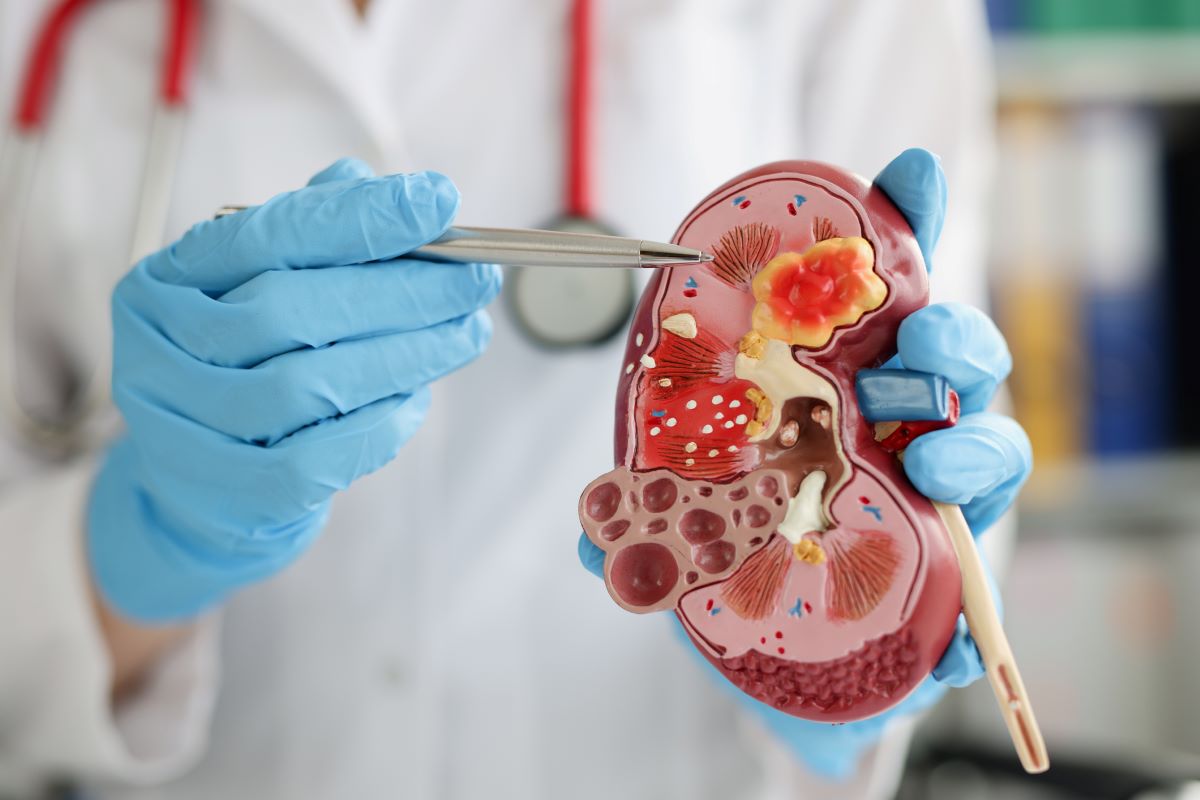What’s the difference between AKI and CKD?
Both are very common. In fact 30% of patients admitted to hospital with an emergency have AKI – usually due to infection and dehydration. Also 10% of the population have CKD (and many don’t know it).

So. What’s the difference between AKI and CKD?
Even though both are kidney diseases, they are quite different in terms of causes, symptoms and treatment.
This is why it is important to do two things: (1) distinguish the two, and (2) identify the underlying cause based on medical assessment, urine and blood tests; and (often) a renal (kidney) ultrasound.
Both diseases affect both kidneys.
Note. Both AKI and CKD are not diagnoses. Both are syndromes (groups of diseases) with specific causes. Your doctors need to find the cause.
Acute kidney injury (AKI)
- Patients look unwell
- Caused by a short-term illness – especially infection, medication, blood loss (e.g. trauma) or obstruction (to the drainage of urine from the kidneys or bladder)
- Decline in kidney function – is rapid, usually over hours or days. Episodes typically last 10-14 days, but can be 2-3 day, or weeks. If dialysis is required for more than 3 months, end-stage renal disease (ESRD; stage 5 CKD) is assumed. This is rare
- Onset of symptoms – can be rapid, and severe. Findings dominated by the underlying cause (e.g. after a heart operation)
- Treatment – focussed on reversing the underlying cause
- Short-term dialysis – is necessary in a small number of cases
- Reversibility – it is usually reversible.
Chronic kidney disease (CKD)
- Patients look well
- Caused by a long-term illness – e.g. diabetes, chronic glomerulonephritis, or a condition that you are born with (e.g. polycystic kidney disease, PKD)
- Decline in kidney function – is gradual, usually over months, years or decades
- Onset of symptoms – slow, and symptoms may not appear until the damage is at a late stage
- Treatment – focused on controlling (rather than reversing) the underlying cause, and slowing progression
- Long-term dialysis or a kidney transplant – is necessary in a small number of cases (about 1 in 100)
- Reversibility – it is usually non-reversible.
AKI on CKD
Some patients have both. In other words they have a background of CKD, that is rapidly worsened by an AKI episode. This can be called ‘AKI on CKD’.
Kidney function usually returns to the baseline level, when the AKI is treated. In a few patients, the kidney function does not recover that well and kidney function is reset a new lower level.
Summary
We have answered the question, what’s the difference between AKI and CKD. We hope it has been helpful.
Other resource
Last Reviewed on 13 April 2024
